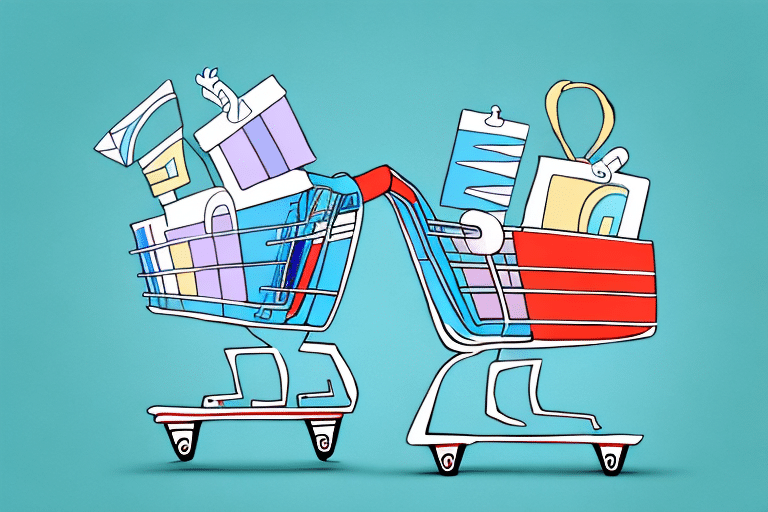Understanding New vs Returning Customers in E-Commerce
In the realm of e-commerce, distinguishing between new and returning customers is essential for optimizing operations and driving business growth. New customers bring fresh opportunities for expansion, while returning customers provide a steady revenue stream and foster brand loyalty. Grasping the nuances of these two customer segments allows businesses to tailor their strategies effectively, ensuring both acquisition and retention efforts are maximized.
Defining New and Returning Customers
New customers are individuals who are making their first purchase from your store. Attracting new customers typically involves outreach strategies such as targeted advertising, social media campaigns, and introductory promotions.
Returning customers, on the other hand, have previously engaged with your brand and made purchases. These customers are valuable as they often have higher lifetime value and can become brand advocates.
The Importance of Tracking Customer Types
Tracking the ratio of new to returning customers provides critical insights into business performance and the effectiveness of marketing strategies. According to a Shopify report, retaining existing customers is significantly more cost-effective than acquiring new ones, with increasing retention rates leading to higher profitability.
Benefits of Monitoring Customer Categories
- Allocates marketing resources efficiently between acquisition and retention efforts.
- Identifies trends and patterns in customer behavior over time.
- Enables data-driven decision-making to enhance overall business strategy.
Strategies for Acquiring New Customers
Expanding your customer base is fundamental for sustained growth. Effective acquisition strategies include:
- Search Engine Optimization (SEO): Improving your website's visibility on search engines can attract organic traffic. Businesses that prioritize SEO see, on average, a 20% increase in traffic.
- Social Media Advertising: Platforms like Facebook and Instagram offer targeted ad options to reach potential customers based on demographics and interests.
- Influencer Marketing: Partnering with influencers can expand your reach and build trust with new audiences.
- Promotional Offers: Discounts, free shipping, and other incentives can entice first-time buyers to make a purchase.
Implementing these strategies not only attracts new customers but also enhances brand awareness and market presence.
Retention Strategies for Returning Customers
Maintaining a loyal customer base is just as important as acquiring new ones. Effective retention strategies include:
- Personalized Marketing: Utilize customer data to tailor recommendations and offers specific to individual preferences.
- Loyalty Programs: Rewarding repeat purchases with points, discounts, or exclusive access can encourage continued engagement.
- Exceptional Customer Service: Providing prompt and helpful support fosters trust and satisfaction.
- Engaging Content: Regularly updating customers with relevant content keeps your brand top-of-mind.
According to a Accenture study, 91% of consumers are more likely to shop with brands that provide personalized offers and recommendations.
Key Metrics and Data Analysis
Measuring and analyzing customer behavior is crucial for refining strategies. Key metrics include:
- Traffic Sources: Percentage of overall traffic from new vs returning customers.
- Conversion Rates: The rate at which visitors make a purchase.
- Average Order Value (AOV): The average amount spent per order.
- Customer Lifetime Value (CLV): The total revenue expected from a customer over their relationship with your business.
Utilizing tools like Google Analytics can help in accurately tracking these metrics, enabling businesses to make informed decisions based on data-driven insights.
Analyzing Customer Data
To determine your new vs returning customer ratio, follow this formula:
(Number of New Customers / Total Number of Customers) × 100 = Percentage of New Customers
Subtracting this percentage from 100 gives the percentage of returning customers. Regular analysis of this ratio helps in assessing the effectiveness of your marketing and retention strategies.
Tools and Software for Customer Tracking
Leveraging the right tools can streamline the process of tracking and analyzing customer activity. Essential tools include:
- Analytics Platforms: Google Analytics, Adobe Analytics.
- Customer Relationship Management (CRM) Software: Salesforce, HubSpot.
- Customer Engagement Tools: Intercom, Zendesk.
These tools provide comprehensive insights into customer behavior, preferences, and interactions, enabling businesses to tailor their strategies effectively.
Enhancing Customer Experience Through Personalization
Personalization plays a pivotal role in both attracting new customers and retaining existing ones. By tailoring the shopping experience to individual preferences, businesses can significantly enhance customer satisfaction and loyalty.
- Personalized Recommendations: Suggesting products based on previous purchases or browsing history.
- Targeted Email Campaigns: Sending customized emails with relevant offers and content.
- Retargeting Ads: Displaying ads to users who have previously interacted with your brand.
Implementing personalization strategies can lead to a 25% increase in customer satisfaction and higher conversion rates.
Leveraging Social Media and Marketing Channels
Social media and other marketing channels are instrumental in driving traffic and acquiring new customers. Effective tactics include:
- Compelling Content: Creating engaging and shareable content to attract new audiences.
- Influencer Partnerships: Collaborating with influencers to amplify your brand message.
- Retargeting Ads: Re-engaging potential customers who have previously visited your site.
Utilizing these channels effectively can lead to increased visibility and higher traffic, contributing to overall business growth.
Optimizing E-Commerce Operations with Customer Data
Utilizing data on new vs returning customers enables businesses to refine their operations for better efficiency and effectiveness. Key optimization strategies include:
- Resource Allocation: Directing marketing efforts based on customer segmentation data.
- Product Development: Using customer feedback to improve products or develop new offerings.
- Marketing Strategy: Adjusting campaigns to better target high-value customer segments.
By aligning operations with customer data, businesses can enhance their strategic initiatives and drive sustained growth.
Conclusion
Effectively differentiating and targeting new and returning customers is vital for optimizing e-commerce operations and achieving long-term success. By tracking key metrics, leveraging the right tools, and implementing strategic acquisition and retention tactics, businesses can build a robust and loyal customer base. Prioritizing personalization and enhancing the overall customer experience further solidifies relationships, driving both immediate sales and sustained growth.




















